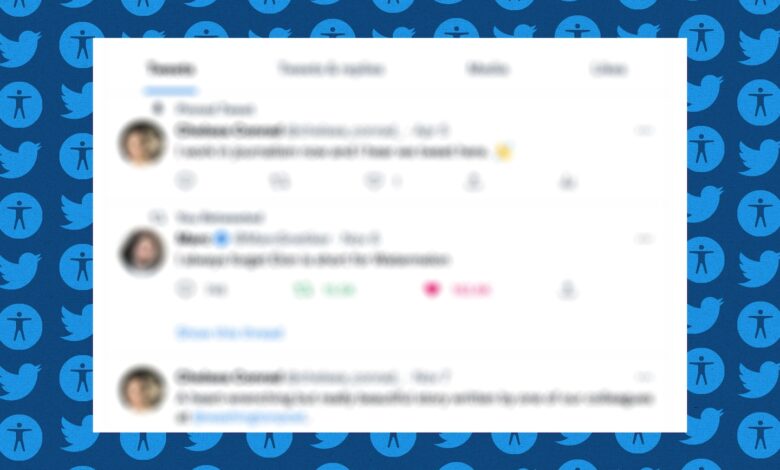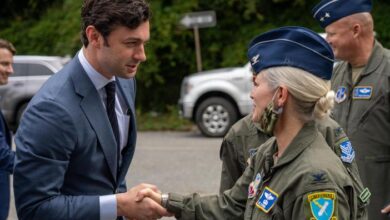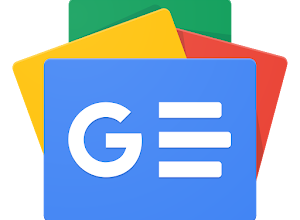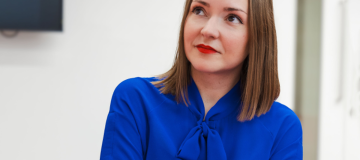Disabled people fear Twitter changes under Elon Musk leave them behind

In addition, several people said they have been experiencing more harassment about their disabilities in recent weeks as Musk dismantled the infrastructure needed to moderate hate speech and abuse. Earlier this week, Musk sent what has been described as an ableist tweet comparing a former employee’s criticisms to “a tragic case of adult onset Tourette’s.”
Amanda Talty, president and chief executive of the Tourette Association of America, said she worries that this type of behavior from the platform’s owner could encourage others on Twitter to follow suit.
“It just perpetuates the misunderstanding of what Tourette’s actually is, but it also minimizes this serious condition and gives a green light to people in the general public to do things like this,” Talty said.
Deaf actress Marlee Matlin tweeted Thursday about the dismantling of the accessibility team, which ensured that the site was compatible with screen readers and provided alt-text and auto-caption support for video and voice tweets.
Matlin said that Twitter has “virtually leveled the playing field” for those with disabilities and evolved into a “barrier-free game changer.” She hinted that she might pause her account in protest of Musk’s decision to fire the accessibility team.
Twitter and Musk did not respond to requests for comment. Twitter laid off most of its communication team.
Twitter has long been uniquely suited for people with disabilities in a way that can’t be easily replicated elsewhere. Because it’s primarily focused on the written word, it’s easier to use for blind people, deaf people and those who struggle with speech or fine motor control issues, compared with social media sites like TikTok and Instagram, which emphasize visuals and audio.
Twitter also has broad reach. Platforms like Reddit and Mastodon group people into specific community spaces or servers, making it harder for posts to gain the attention of the general public. And many people with disabilities use Twitter to organize, fundraise and run businesses.
Now several critical teams essential to keeping the site functioning have been cut, and worries are growing that the site may collapse.
“Being able to be seen online was a lifeline, it was literally a lifeline for a lot of us,” said Imani Barbarin, a prominent disability rights advocate who has cerebral palsy.
Before Twitter, Barbarin said she often felt isolated and wasn’t easily able to connect with others who had her condition. Now she has amassed more than 173,000 followers and has often used the platform to start awareness campaigns around issues like covid-19 safety precautions.
Stephanie Tait, 37, of Salem, Ore., has been isolating during the pandemic because she is immunocompromised and has health issues associated with Lyme disease. Twitter is the main way she interacts with the world.
She said there is always some ableism and harassment on social media platforms. But since Musk took over, she’s now getting two dozen malicious messages a day. It’s gotten so bad, she made her inbox private.
“I feel like it’s all become a giant joke,” Tait said. “It’s funny to beat down on different marginalized communities because Elon finds it funny. But it makes the site unusable for a lot of us.”
Tait has tried starting a Mastodon account, but so far said she finds the site confusing and potentially inaccessible for those with neurological differences, like herself. A more visual social media platform like TikTok is also not a great option because she isn’t comfortable sharing images and video on days where her health conditions make it difficult to get out of bed, shower or get dressed, she said.
David Radcliff, 40, of North Hollywood, Calif., a writer who has cerebral palsy, said he tried to leave Twitter in 2020, but rejoined a few weeks later. He said without Twitter, it is more difficult to network. Many in-person networking events are in small spaces that are inaccessible for his wheelchair or require him to stand for hours with crutches.
Twitter “gives our voices a place to be reckoned with on our own terms,” he said.
“There are so many places where disabled people aren’t seen,” he said. “Losing Twitter is just another blow to that and increases invisibility.”
Aparna Nair, an assistant professor at the University of Oklahoma at Norman, said Twitter has been a crucial way for people with disabilities to share resources and research. She has epilepsy and does not have the same ability as nondisabled researchers to travel and share her work at various conferences, she said.
If the changes at Twitter lead to fewer users or more technical issues, it could affect some disabled business owners, who use the site to market their crafts, products and services.
That includes Abi Oyewole, 32, of Calgary, Canada, who has multiple disabilities. She uses Twitter, where she has more than 25,000 followers, to sell items from her store, Bibipins, such as compression socks or stickers with her designs. She has tried marketing her business on other platforms, she said, but Twitter is where she has had the most success.
“An abled person can just get a different job if their business fails, but for us, it’s often the only option,” she said.
Many other disabled people rely on the platform to help find ways to pay for basic needs. Victor Manuel, 24, of New York City has used Twitter for online fundraisers to help pay for his housing, medication and health care. He has multiple disabilities and is immunocompromised, but temporarily lost his family’s support when he came out as transgender.
“Twitter has changed my life completely, it’s not even comparable,” said Manuel, who requested to use only his first and middle name to protect his privacy. “Without a platform like Twitter to share these things so easily, I think a lot of people are going to suffer in very real ways.”





